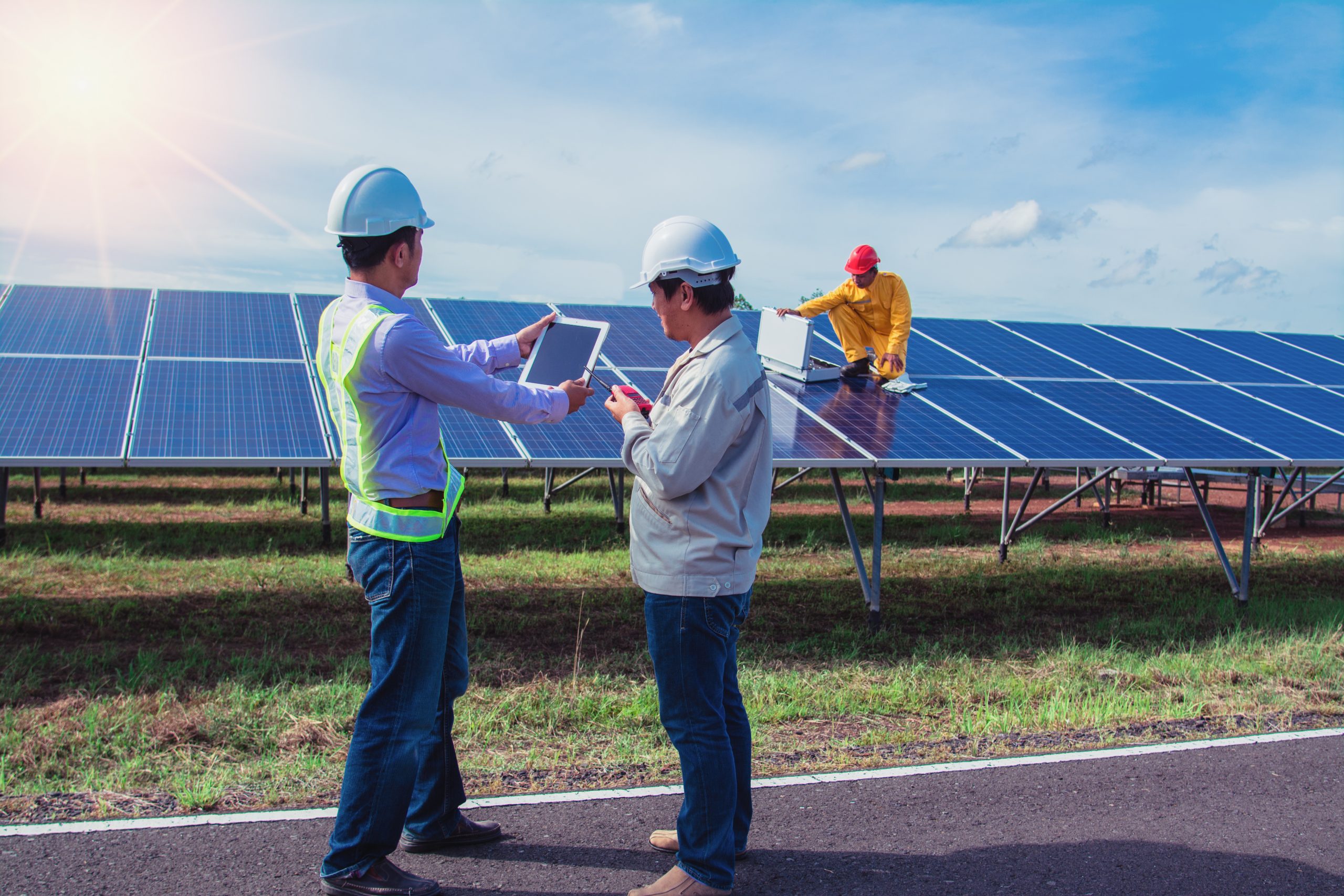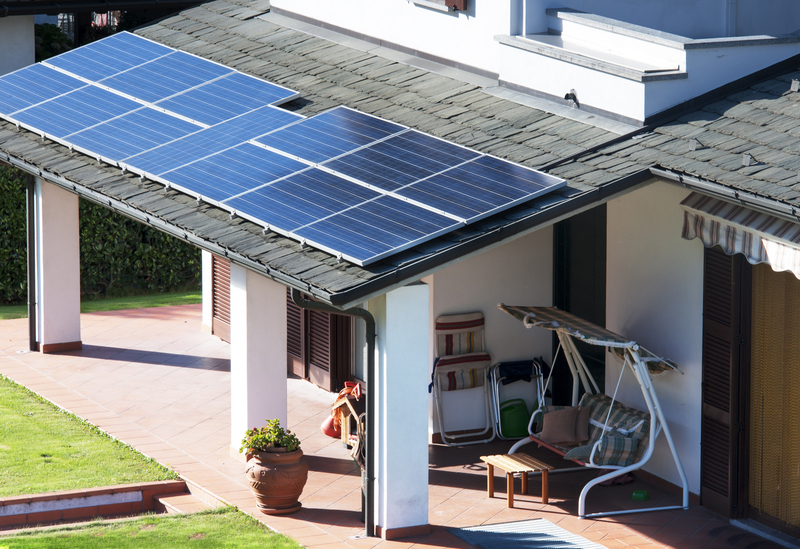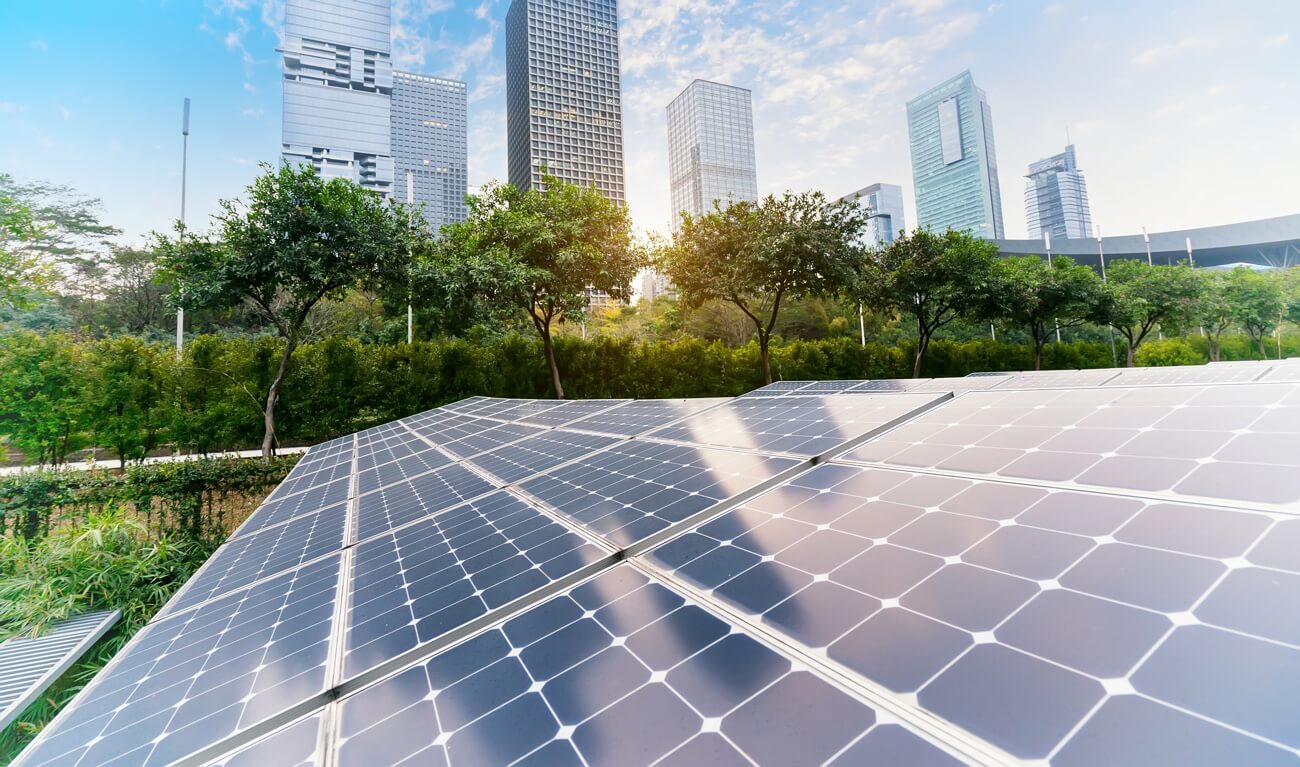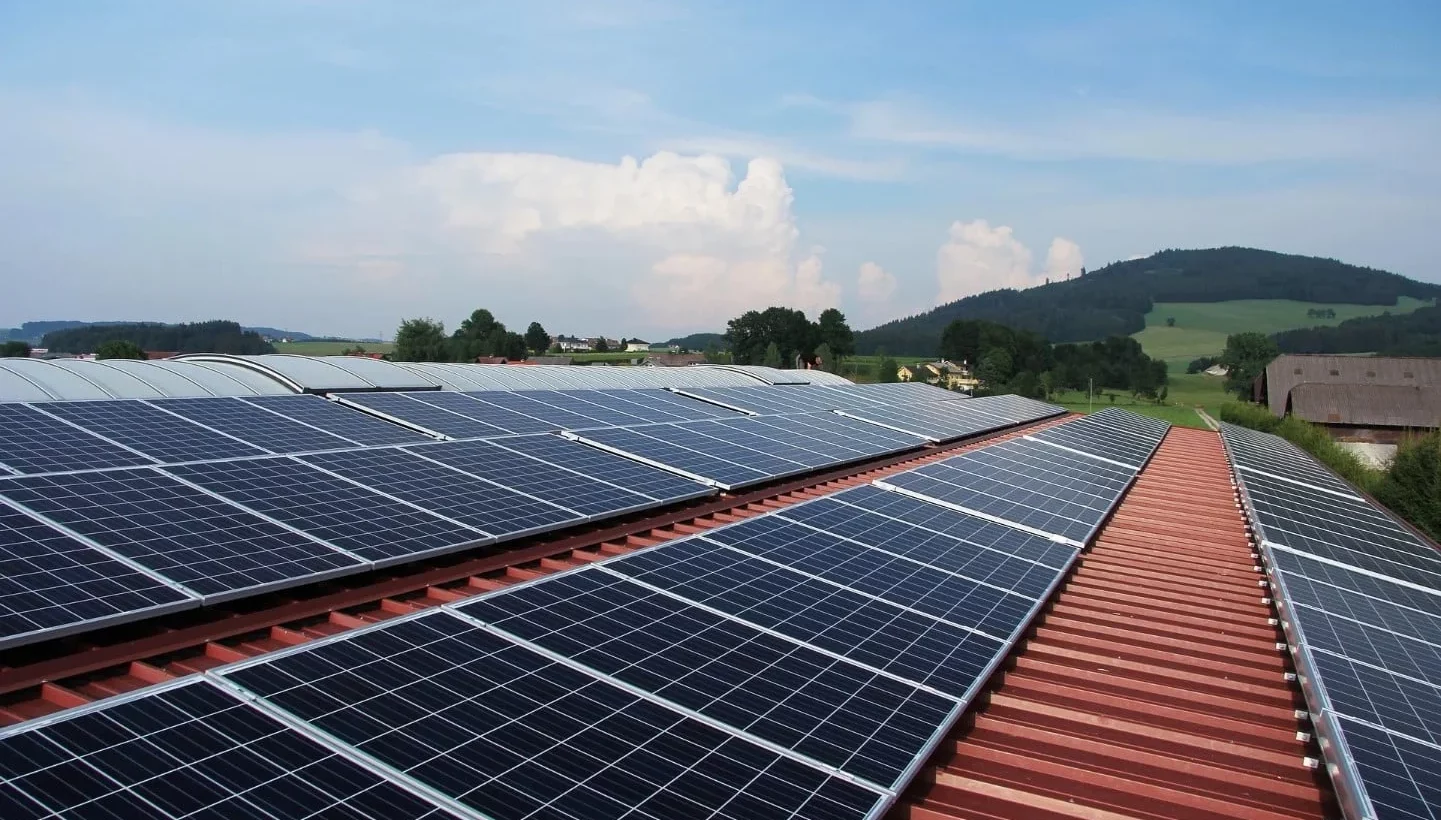This article is your guide to a solar power purchase agreement (PPA). A PPA is a way for homeowners to have solar panels on their property, but not full responsibility for the units, as a solar company or third-party developer owns and operates them. By opting for a solar PPA, you can reap the benefits of solar energy without the hefty initial investment. However, it’s crucial to remember that while the upfront costs might be low, a power purchase agreement solar program might stretch your expenses over a longer term.
Here at The Energy Professor, we want to give you the information you need to not only save money on your energy bill but to also become more energy efficient. We hope find this post helpful! And makes it easier for you to know more about solar panels. Be sure to check out our solar tool below to calculate how much you could save at your address by switching to solar panels.
The Energy Professor Solar Panel Tool
What is a Solar Power Purchase Agreement?

A solar power purchase agreement (PPA) is a financial arrangement in which a third-party developer installs, owns, and operates a solar energy system on a customer’s property. A host customer agrees to have solar panels installed on their property, typically its roof, and signs a long-term contract with the solar services provider to purchase the generated power.
The customer agrees to purchase the power generated by the system at a predetermined rate, usually lower than the local utility rate, for a specified period, typically 10 to 25 years. This allows the customer to benefit from solar electricity without the upfront costs and maintenance responsibilities associated with owning the system, making it an appealing option for those looking to manage their energy consumption effectively.
How Does a Solar PPA Work?
A solar power purchase agreement (PPA) is a financial arrangement where a third-party owner installs, owns, and operates a solar system on your property. Under this agreement, you purchase the electricity generated by the system for a set period, typically ranging from 10 to 25 years, at a predetermined rate. This rate is often lower than the local utility rate, providing potential savings on your energy costs.
The solar company owns the solar system and charges you a set per kilowatt-hour (kWh) rate for the electricity produced. Your monthly bills will vary depending on the amount of electricity the system generates. If the solar system does not produce enough power to meet your entire energy needs, you may still receive an electric bill from your utility for the additional power consumed. This arrangement allows you to benefit from renewable energy without the upfront costs and maintenance responsibilities associated with owning a solar panel system.
What is the point of a Power Purchase Agreement (PPA) in Solar?
A PPA is designed to mitigate the financial and operational challenges homeowners face when switching to solar. Its primary goal is to simplify the transition to solar energy without hefty initial costs, thus enhancing cost savings over the long run.
The solar energy produced by the panels can significantly offset electricity costs for homeowners.
But who exactly drives these PPA solar agreements?
The majority are orchestrated by renewable energy investment firms, including many recognized by the Solar Energy Industries Association. There are over 200 specialized companies globally committed to propelling renewable energy adoption for homeowners. Once they’ve financed and installed the solar panels on your property through a PPA, they sell the generated energy back to you at a fixed price, often leading to lower monthly payments and ensuring a win-win scenario for both parties. This model not only supports individual energy needs but also contributes to the reduction of carbon emissions, promoting a more sustainable future.
Related Post: Complete Guide on Solar Leasing
The Pros & Cons of Solar Purchase Power Agreements (SPPA)

Pros:
- Zero initial investment required, and plenty of financing options for all types of budgets
- Consistent energy pricing safeguarding against market fluctuations
- Boost your eco-credentials by being solar-powered
- No worries about system performance or operational hiccups as the solar provider handles maintenance and performance issues.
- Immediate positive cash flow from the onset
- A tangible showcase of your commitment to the environment
- Significant reduction in carbon emissions, helping to lower your carbon footprint.
- Bolstering the local economy and championing job opportunities in the Energy Industries.
- Potential surge in property value due to solar integration
Cons:
- Often involves intricate negotiations, possibly incurring higher transactional costs compared to a direct solar PV system purchase.
- Dual electricity billing scenarios if the solar installation doesn’t cater to 100% of the property’s energy usage
- An uptick in property taxes following any reassessment due to increased property value, affecting overall cost savings.
- Restrictions imposed by site lease agreements, hindering potential property modifications affecting PV system efficiency or access
- Essential comprehension of Solar Renewable Energy Certificate (SREC) ownership and sale trade-offs
- May not be as beneficial as solar loans for those who can afford the upfront costs and want to take advantage of tax incentives
Solar System Installation and Maintenance
When you enter into a solar PPA, the solar company takes on the responsibility of installing and maintaining the solar system. This process begins with designing a system tailored to your property’s specific needs, followed by obtaining the necessary permits and installing the solar panels. The solar company ensures that the installation is done efficiently and in compliance with local regulations.
Once the solar panels are installed, the solar company continues to monitor the system’s performance to ensure it operates at its best. They handle any necessary repairs or maintenance, relieving you of the burden of upkeep. This can be particularly beneficial for homeowners who want to enjoy the benefits of solar energy without worrying about the technical aspects of maintaining a solar power system.
Factors to Consider Before Agreeing to a Solar PPA
Before committing to a solar PPA, it’s crucial to consider several factors to ensure it’s the right choice for you. One of the most important aspects is the length of the contract, which can range from 10 to 25 years. Make sure you’re comfortable with the duration and terms of the agreement.
Another key factor is the rate you’ll be paying for the electricity generated by the solar system. This rate should be lower than your current electricity rate, but it’s essential to ensure it’s affordable and provides cost savings over time. Additionally, research the solar company’s reputation and experience. Working with a reputable company with a proven track record in installing and maintaining solar systems can provide peace of mind.
Understanding the warranty and maintenance terms of the agreement is also vital. Ensure you know what is covered and what isn’t, and clarify the process for reporting any issues. Finally, consider the potential impact on your property value. While installing a solar system can increase your property value, it’s important to understand how the PPA might affect this.
Related Post: Pros and Cons of Solar
What is the Difference Between a Solar Lease and a Solar PPA?

The primary difference between solar leases and a solar power purchase agreement (PPA) lies in how the customer pays for the solar energy system and its output:
- Solar Lease:
- Payment Structure: The customer pays a fixed rate to lease the solar energy system from a third-party owner.
- Energy Usage: The monthly lease payment remains the same regardless of how much electricity the system produces or the customer’s energy consumption.
- Cost Predictability: Offers predictable monthly costs but does not directly tie payment to the amount of electricity generated.
- Solar PPA:
- Payment Structure: The customer pays for the electricity generated by the solar energy system at a predetermined per kilowatt-hour (kWh) rate.
- Energy Usage: The monthly payment varies based on the actual amount of electricity the system produces.
- Cost Savings: The per-kWh rate is usually lower than the local utility rate, which can lead to savings on electricity bills.
Things to Look for in a Solar PPA Contract
When reviewing a solar PPA contract, there are several critical elements to consider. First, understand the length of the contract and the rate you’ll be paying for the electricity generated by the solar system. Look for any escalator clauses that could increase the rate over time, and ensure the rate remains competitive and affordable.
Review the payment terms of the agreement carefully. Understand how you’ll be paying for the electricity and the payment schedule. Be aware of any penalties or fees associated with early termination of the contract, as these could impact your overall savings.
Finally, pay close attention to the warranty and maintenance terms. Make sure you know what is covered and what isn’t, and understand the process for reporting any issues or problems with the system. By thoroughly reviewing the contract and considering these factors, you can make an informed decision about whether a solar PPA is the right choice for you.
Related Post: What Do Tesla Solar Panels Cost?
Solar Power Purchase Agreement FAQ

Q: What Are The Tax Incentives For Solar Power?
A: The main tax incentive for solar power in the U.S. is the Solar Investment Tax Credit (ITC), which lets homeowners and businesses deduct part of their solar installation costs from federal taxes. The federal solar tax credit rate has been decreasing over time. Additionally, many states, including New York and New Jersey, provide solar incentives. It’s best to check local resources or consult a tax professional for current details.
Q: What Are Common Solar Power Laws?
A: Common solar power laws include Net Metering for selling excess power back to the grid, Interconnection Standards for grid connections, state-specific Renewable Portfolio Standards (RPS), Solar Access Rights protecting sunlight access, and safety-focused Building and Electrical Codes. Local and state regulations provide detailed specifics.
Q: Who Are PPA Developers?
A: PPA Developers are companies or entities that finance and install solar energy systems on properties, selling the generated power back to the property owner at a fixed rate under a Power Purchase Agreement (PPA). They typically bear the initial costs and maintenance, allowing property owners to benefit from solar energy without a large upfront investment.
Q: What’s The Difference Between a PPA and a Solar Lease?
A: The main difference between a PPA and a Solar Lease is in the payment structure. With a PPA, you pay for the electricity the solar panels produce at a set rate. In a Solar Lease, you pay a fixed monthly amount to rent the solar equipment, regardless of how much electricity it generates. Both options allow homeowners to use solar energy without purchasing the system outright.
Do you Need Cheaper Electricity?
If you’ve taken the time to understand the information on your bill and discovered you’re paying more than you’d like for your electricity, have you looked around for a cheaper deal? The Energy Professor has a wealth of information on ways to save on your utilities, including details of top deals that could significantly reduce your monthly or quarterly electricity bills.
We hope you found this article helpful! If you are looking for ways to increase energy efficiency and sustainability in your home be sure to take a look at all of the latest renewable energy options in your area. The Energy Professor helps residential and small business owners find qualified energy suppliers in New York, New Jersey, Pennsylvania, Texas, Ohio, Maryland, Illinois, and Massachusetts.


